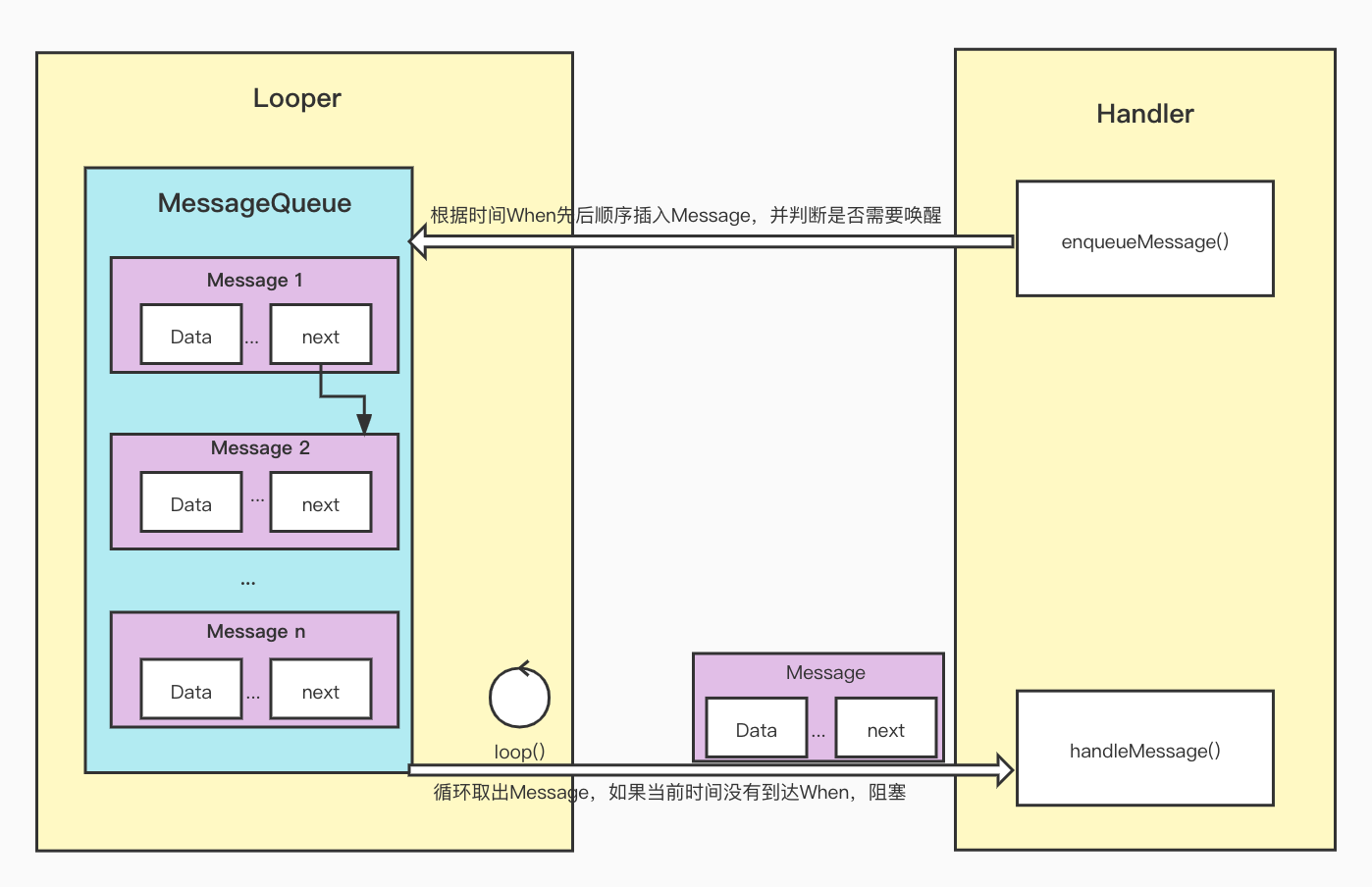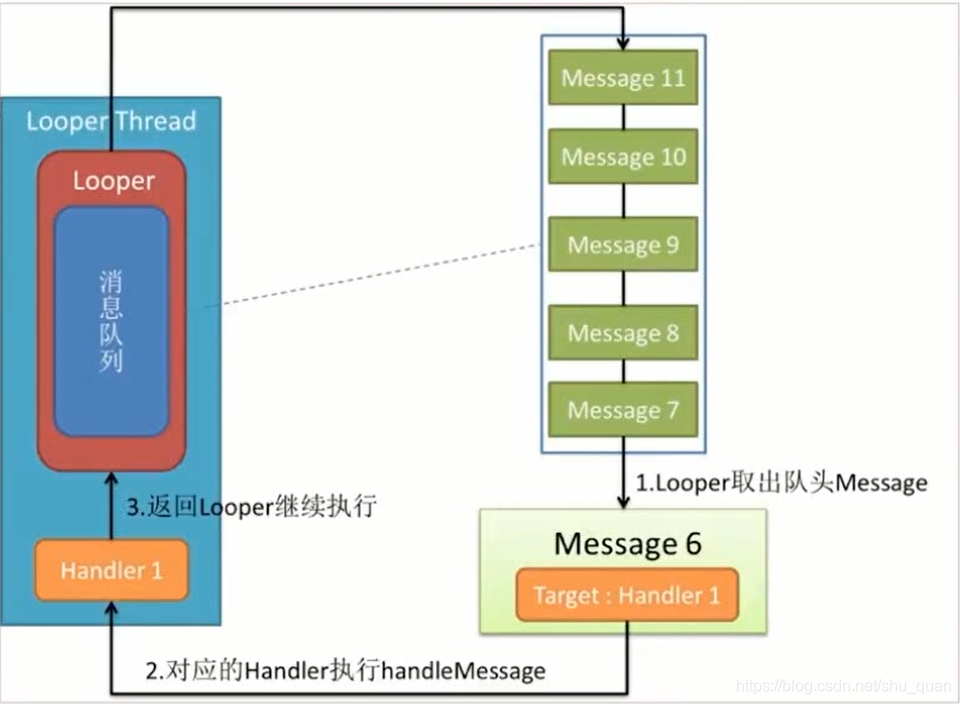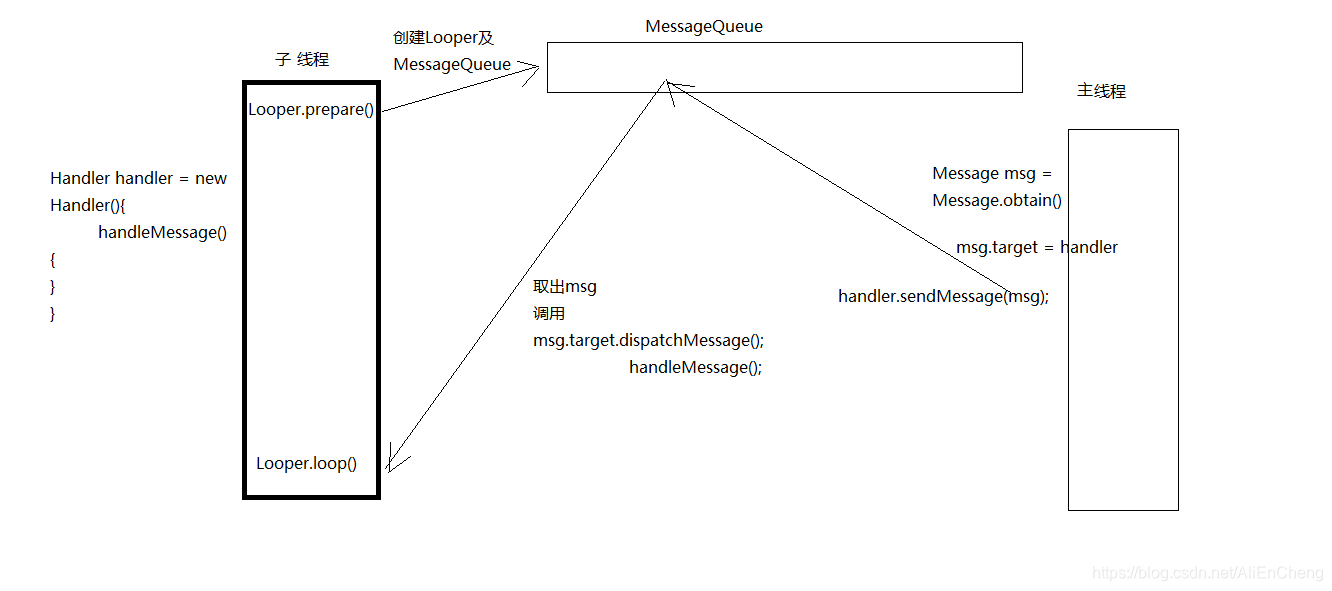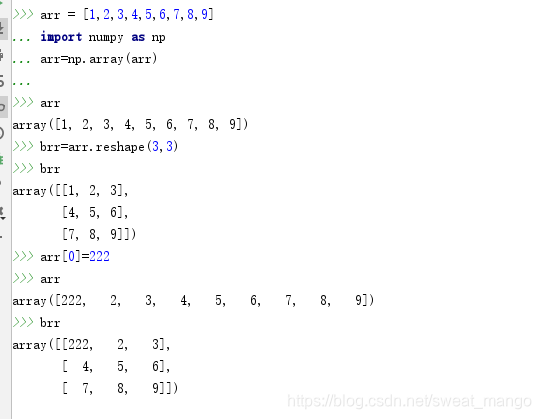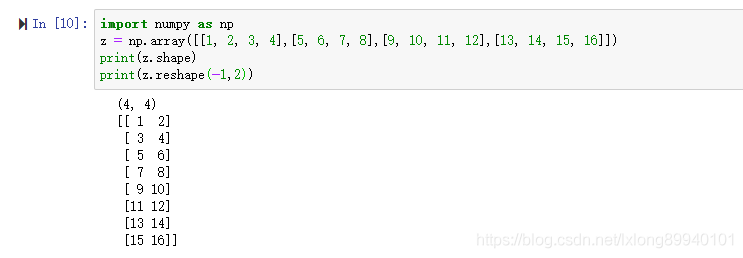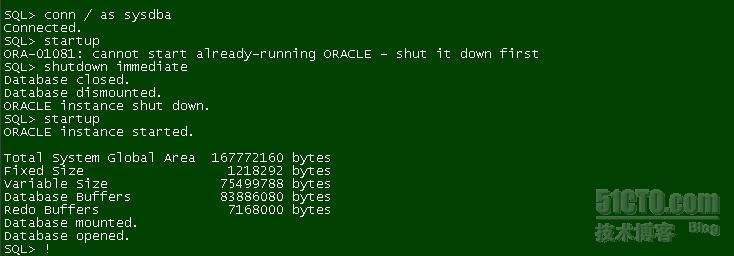【Android】Handler机制详解
本文是在 Carson带你学Android 作者的异步通信 专栏中Handler的基础上学习整理的kotlin版本,并且Android源码部分也更新至最新。
1.使用Handler消息传递机制的原因
![[外链图片转存中...(img-17wGmBth-1666010210163)]](https://img-blog.csdnimg.cn/554f091533824bb1b19eb736059d1e68.jpeg)
2.相关概念
| 概念 | 定义 | 作用 | 备注 |
|---|---|---|---|
| Main Thread | 应用程序初次启动时会自动开启主线程 | 处理与UI相关的操作 | 与子线程的通信媒介为Handler |
| 子线程 | 手动开启的线程 | 执行耗时操作,如加载数据,网络请求以及IO操作 | 与主线程的通信媒介为Handler |
| Message | 线程间通信的基本数据单元 | 存储通信信息 | / |
| Message Queue | 数据结构 | 存储Handler发送的Message | / |
| Handler | 线程之间Message的处理者 | 添加Message到Message Queue;处理Looper分发的Message | / |
| Looper | Message Queue与Handler之间的通信媒介 | 循环取出Message Queue中的Message并分发给对应的Handler | 一个线程只能拥有一个Looper;但一个Looper可以与多个线程的Handler绑定;因此提供了线程间通信的能力 |
3.工作流程

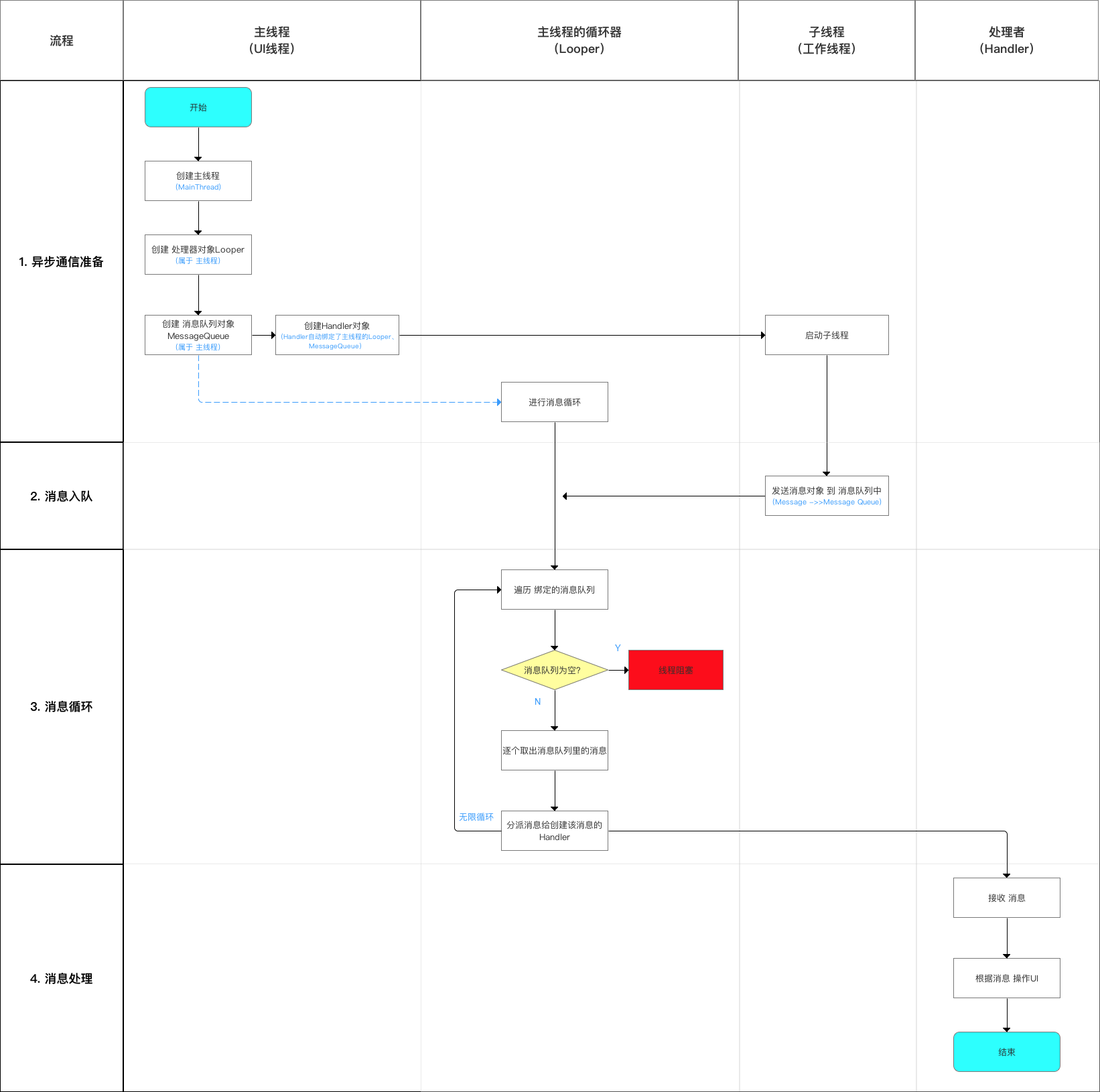
4.使用方式
1.使用 Handler.sendMessage()
/** * 方式1:新建Handler子类*/
// 步骤1:自定义Handler子类 & 复写handleMessage()方法
class mHandler : Handler() {// 通过复写handlerMessage() 从而确定更新UI的操作override fun handleMessage(msg: Message) {...// 需执行的UI操作}
}// 步骤2:在主线程中创建Handler实例
private val mhandler = mHandler()// 步骤3:创建所需的消息对象
val msg = Message.obtain() // 实例化消息对象
msg.what = 1 // 消息标识
msg.obj = "tmp" // 消息内容// 步骤4:在工作线程中 通过Handler发送消息到消息队列中
// 可通过sendMessage() / post()
// 多线程可采用AsyncTask、继承Thread类、实现Runnable
mHandler.sendMessage(msg)// 步骤5:开启工作线程(同时启动了Handler)/** * 方式2:匿名内部类*/
// 步骤1:在主线程中 通过匿名类 创建Handler类对象
val mhandler = object : Handler() {// 通过复写handlerMessage()从而确定更新UI的操作override fun handleMessage(msg: Message) {...// 需执行的UI操作}
}// 步骤2:创建消息对象// 步骤3:在工作线程中 通过Handler发送消息到消息队列中// 步骤4:开启工作线程(同时启动了Handler)
2.使用Handler.post()
// 步骤1:在主线程中创建Handler实例
private val mhandler = mHandler()// 步骤2:在工作线程中 发送消息到消息队列中 & 指定操作UI内容
// 传入Runnable对象
mHandler.post{...// 需执行的UI操作
}// 步骤3:开启工作线程(同时启动了Handler)
5.注意点
Thread, Looper 以及 Handler 之间的对应关系如下:
- 1个 Thread 只能绑定 1个 Looper ,但可以有多个 Handler
- 1个 Looper 可绑定多个 Handler
- 1个 Handler 只能绑定1个 Looper
![[外链图片转存中...(img-t6aujji5-1666010210165)]](https://img-blog.csdnimg.cn/c4830c1712724e2e80599e787895b802.jpeg)
6.源码分析
1.使用 Handler.sendMessage()
步骤1:在主线程中通过匿名内部类创建Handler类对象
/** * 具体使用*/
private Handler mhandler = new Handler(){// 通过复写handlerMessage()指定待执行的UI更新操作@Overridepublic void handleMessage(Message msg) {...// 待执行的UI操作}
};/** * 源码分析:Handler的构造方法* 作用:初始化Handler对象 & 绑定线程* 注:* a. Handler需绑定 线程才能使用;绑定后,Handler的消息处理会在绑定的线程中执行* b. 绑定方式 = 先指定Looper对象,从而绑定了 Looper对象所绑定的线程(因为Looper对象本已绑定了对应线程)* c. 即:指定了Handler对象的 Looper对象 = 绑定到了Looper对象所在的线程*/
public Handler() {this(null, false);// ->>分析1
}
/** * 分析1:this(null, false) = Handler(null,false)*/
public Handler(Callback callback, boolean async) {...// 1. 指定Looper对象mLooper = Looper.myLooper();if (mLooper == null) {throw new RuntimeException("Can't create handler inside thread that has not called Looper.prepare()");}// Looper.myLooper()作用:获取当前线程的Looper对象;若线程无Looper对象则抛出异常// 即 :若线程中无创建Looper对象,则也无法创建Handler对象// 故 若需在子线程中创建Handler对象,则需先创建Looper对象// 注:可通过Loop.getMainLooper()可以获得当前进程的主线程的Looper对象// 2. 绑定消息队列对象(MessageQueue)mQueue = mLooper.mQueue;// 获取该Looper对象中保存的消息队列对象(MessageQueue)// 至此,保证了handler对象 关联上 Looper对象中MessageQueue
}
当创建Handler对象时,通过构造方法自动关联当前线程的Looper对象以及对应的消息队列对象(MessageQueue),从而自动绑定了创建Handler对象操作的线程
但是在上述使用步骤中,并无创建Looper对象以及对应的消息队列对象(MessageQueue)这一步
步骤1前的隐式操作1:创建循环器对象(Looper)以及消息队列对象(MessageQueue)
/** * 源码分析1:Looper.prepare()* 作用:为当前线程(子线程) 创建1个循环器对象(Looper),同时也生成了1个消息队列对象(MessageQueue)* 注:需在子线程中手动调用该方法*/
public static void prepare() {prepare(true);
}private static void prepare(boolean quitAllowed) {// 1. 判断sThreadLocal是否为null,否则抛出异常//即 Looper.prepare()方法不能被调用两次 = 1个线程中只能对应1个Looper实例// 注:sThreadLocal = 1个ThreadLocal对象,用于存储线程的变量if (sThreadLocal.get() != null) {throw new RuntimeException("Only one Looper may be created per thread");}// 2. 若为初次Looper.prepare(),则创建Looper对象 & 存放在ThreadLocal变量中// 注:Looper对象是存放在Thread线程里的// 源码分析Looper的构造方法->>分析asThreadLocal.set(new Looper(quitAllowed));
}/** * 分析a:Looper的构造方法**/
private Looper(boolean quitAllowed) {// 1. 创建1个消息队列对象(MessageQueue)// 即 当创建1个Looper实例时,会自动创建一个与之配对的消息队列对象(MessageQueue)mQueue = new MessageQueue(quitAllowed);mThread = Thread.currentThread();
}/** * 源码分析2:Looper.prepareMainLooper()* 作用:为 主线程(UI线程) 创建1个循环器对象(Looper),同时也生成了1个消息队列对象(MessageQueue)* 注:该方法在主线程(UI线程)创建时自动调用,即 主线程的Looper对象自动生成,不需手动生成*/
public static void prepareMainLooper() {prepare(false);synchronized (Looper.class) {if (sMainLooper != null) {throw new IllegalStateException("The main Looper has already been prepared.");}sMainLooper = myLooper();}
}
// 在Android应用进程启动时,会默认创建1个主线程(ActivityThread)
// 创建时,会自动调用ActivityThread的1个静态的main()方法 = 应用程序的入口
// main()内则会调用Looper.prepareMainLooper()为主线程生成1个Looper对象/** * 源码分析:main()**/
public static void main(String[] args) {...// 1. 为主线程创建1个Looper对象,同时生成1个消息队列对象(MessageQueue)Looper.prepareMainLooper();...// 2. 创建主线程ActivityThread thread = new ActivityThread();...// 3.获取Handlerif (sMainThreadHandler == null) {sMainThreadHandler = thread.getHandler();}...// 4. 开启消息循环Looper.loop();throw new RuntimeException("Main thread loop unexpectedly exited");
}
创建主线程时,会自动调用ActivityThread的1个静态的main();而main()内则会调用Looper.prepareMainLooper()为主线程生成1 个Looper对象,同时也会生成其对应的MessageQueue对象,即主线程的Looper对象自动生成,不需手动生成;而子线程的Looper对象则需手动通过Looper.prepare()创建。(在子线程若不手动创建Looper对象 则无法生成Handler对象)
生成Looper以及MessageQueue对象后,则会进入消息循环:Looper.loop()。
步骤1前的隐式操作2:消息循环
/** * 源码分析: Looper.loop()* 作用:消息循环,即从消息队列中获取消息、分发消息到Handler* 特别注意:* a. 主线程的消息循环不允许退出,即无限循环* b. 子线程的消息循环允许退出:调用消息队列MessageQueue的quit()*/
public static void loop() {// 1. 获取当前Looper的消息队列// myLooper()作用:返回sThreadLocal存储的Looper实例;若me为null 则抛出异常// 因此loop()执行前必须执行prepare()来创建1个Looper实例final Looper me = myLooper();if (me == null) {throw new RuntimeException("No Looper; Looper.prepare() wasn't called on this thread.");}if (me.mInLoop) {Slog.w(TAG, "Loop again would have the queued messages be executed"+ " before this one completed.");}me.mInLoop = true;...// 2. 消息循环for (;;) {if (!loopOnce(me, ident, thresholdOverride)) {return;}}
}
public static void loop() {...// 1. 获取当前Looper的消息队列final Looper me = myLooper();if (me == null) {throw new RuntimeException("No Looper; Looper.prepare() wasn't called on this thread.");}// myLooper()作用:返回sThreadLocal存储的Looper实例;若me为null 则抛出异常// 即loop()执行前必须执行prepare(),从而创建1个Looper实例final MessageQueue queue = me.mQueue;// 获取Looper实例中的消息队列对象(MessageQueue)// 2. 消息循环(通过for循环)for (;;) {// 2.1 从消息队列中取出消息Message msg = queue.next(); if (msg == null) {return;}// next():取出消息队列里的消息// 若取出的消息为空,则线程阻塞// ->> 分析1 // 2.2 派发消息到对应的Handlermsg.target.dispatchMessage(msg);// 把消息Message派发给消息对象msg的target属性// target属性实际是1个handler对象// ->>分析2// 3. 释放消息占据的资源msg.recycle();}
}private static boolean loopOnce(final Looper me,final long ident, final int thresholdOverride) {// 从消息队列中获取消息// ->>分析1Message msg = me.mQueue.next(); if (msg == null) {// 没有消息表示消息队列正在退出return false;}...// 确保observer在处理事务时不会改变final Observer observer = sObserver;...try {// 派发消息到对应的Handler// ->>分析2msg.target.dispatchMessage(msg);...} ...// 3.释放资源msg.recycleUnchecked();return true;
}/** * 分析1:queue.next()* 定义:MessageQueue中的方法* 作用:从消息队列中移出并返回该消息*/
Message next() {// 如果消息循环已经退出并被释放,则在此处返回。如果App试图在不支持的退出后重新启动循环程序,这种情况就会发生。final long ptr = mPtr;if (ptr == 0) {return null;}...// 该参数用于确定消息队列中是否还有消息,从而决定消息队列应处于出队消息状态 or 等待状态int nextPollTimeoutMillis = 0;for (;;) {if (nextPollTimeoutMillis != 0) {Binder.flushPendingCommands();}// native层方法,若是nextPollTimeoutMillis为-1,此时消息队列处于等待状态 nativePollOnce(ptr, nextPollTimeoutMillis);synchronized (this) {final long now = SystemClock.uptimeMillis();Message prevMsg = null;Message msg = mMessages;if (msg != null && msg.target == null) {// 按照时间顺序取出下一个消息do {prevMsg = msg;msg = msg.next;} while (msg != null && !msg.isAsynchronous());}if (msg != null) {if (now < msg.when) {// 下一条消息还没有准备好。设置一个超时以在它准备好时唤醒nextPollTimeoutMillis = (int) Math.min(msg.when - now, Integer.MAX_VALUE);} else {// 取出了消息mBlocked = false;if (prevMsg != null) {prevMsg.next = msg.next;} else {mMessages = msg.next;}msg.next = null;if (DEBUG) Log.v(TAG, "Returning message: " + msg);msg.markInUse();return msg;}} else {// 没有更多消息,下次循环时消息队列将处于等待状态nextPollTimeoutMillis = -1;}// 已经处理了所有挂起的消息,就处理退出消息。if (mQuitting) {dispose();return null;}...// 在调用空闲处理程序时,可能已经传递了一条新消息,因此不必等待,可以返回并再次查看挂起的消息。nextPollTimeoutMillis = 0;}
}/** * 分析2:dispatchMessage(msg)* 定义:Handler中的方法* 作用:派发消息到对应的Handler实例 & 根据传入的msg作出对应的操作*/
public void dispatchMessage(Message msg) {// 1. 若msg.callback属性不为空,则代表使用了post(Runnable r)发送消息// 则执行handleCallback(msg),即回调Runnable对象里复写的run()// 放在“post(Runnable r)”方式时分析if (msg.callback != null) {handleCallback(msg);} else {...// 2. 若msg.callback属性为空,则代表使用了sendMessage(Message msg)发送消息// 则执行handleMessage(msg),即回调复写的handleMessage(msg) ->> 分析3handleMessage(msg);}
}/** * 分析3:handleMessage(msg)* 注:该方法 = 空方法,在创建Handler实例时复写 = 自定义消息处理方式**/
public void handleMessage(Message msg) { ... // 创建Handler实例时复写
}
- 消息循环的操作 = 消息出队 + 分发给对应的Handler实例
- 分发给对应的Handler的过程:根据出队消息的归属者通过dispatchMessage(msg)进行分发,最终回调复写的handleMessage(Message msg),从而实现 消息处理 的操作
- 在进行消息分发时(dispatchMessage(msg)),会进行1次发送方式的判断:
- 若msg.callback属性不为空,则代表使用了post(Runnable r)发送消息,则直接回调Runnable对象里复写的run()
- 若msg.callback属性为空,则代表使用了sendMessage(Message msg)发送消息,则回调复写的handleMessage(msg)
步骤2:创建消息对象
/** * 具体使用*/
Message msg = Message.obtain(); // 实例化消息对象
msg.what = 1; // 消息标识
msg.obj = "tmp"; // 消息内容/** * 源码分析:Message.obtain()* 作用:创建消息对象* 注:创建Message对象可用关键字new 或 Message.obtain()*/
public static Message obtain() {// Message内部维护了1个Message池,用于Message消息对象的复用。使用obtain()可以直接从池内获取synchronized (sPoolSync) {if (sPool != null) {Message m = sPool;sPool = m.next;m.next = null;m.flags = 0; // 清除在使用的标志sPoolSize--;return m;}// 使用obtain()”创建“消息对象,可以避免每次都使用new重新分配内存}// 若池内无消息对象可复用,使用关键字new创建return new Message();
}
步骤3:在工作线程中发送消息到消息队列中
/** * 具体使用*/mHandler.sendMessage(msg);/** * 源码分析:mHandler.sendMessage(msg)* 定义:Handler的方法* 作用:将消息 发送 到消息队列中(Message ->> MessageQueue)*/
public final boolean sendMessage(Message msg) {return sendMessageDelayed(msg, 0);// ->>分析1
}/** * 分析1:sendMessageDelayed(msg, 0)**/
public final boolean sendMessageDelayed(Message msg, long delayMillis) {if (delayMillis < 0) {delayMillis = 0;}return sendMessageAtTime(msg, SystemClock.uptimeMillis() + delayMillis);// ->> 分析2
}/** * 分析2:sendMessageAtTime(msg, SystemClock.uptimeMillis() + delayMillis)**/
public boolean sendMessageAtTime(Message msg, long uptimeMillis) {// 1. 获取对应的消息队列对象(MessageQueue)MessageQueue queue = mQueue;if (queue == null) {RuntimeException e = new RuntimeException(this + " sendMessageAtTime() called with no mQueue");Log.w("Looper", e.getMessage(), e);return false;}// 2. 调用了enqueueMessage方法 ->>分析3return enqueueMessage(queue, msg, uptimeMillis);
}/** * 分析3:enqueueMessage(queue, msg, uptimeMillis)**/
private boolean enqueueMessage(MessageQueue queue, Message msg, long uptimeMillis) {// 1. 将msg.target赋值为this// 即 把当前的Handler实例对象作为msg的target属性msg.target = this;// 上面说的Looper的loop()中消息循环时,会从消息队列中取出每个消息msg,然后执行msg.target.dispatchMessage(msg)去处理消息// 实际上则是将该消息派发给对应的Handler实例 ...// 2. 调用消息队列的enqueueMessage()// 即:Handler发送的消息,最终是保存到消息队列->>分析4return queue.enqueueMessage(msg, uptimeMillis);
}/** * 分析4:queue.enqueueMessage(msg, uptimeMillis)* 定义:MessageQueue的方法* 作用:将消息根据时间放入到消息队列中(Message ->> MessageQueue)* 采用单链表实现:提高插入消息、删除消息的效率*/boolean enqueueMessage(Message msg, long when) {if (msg.target == null) {throw new IllegalArgumentException("Message must have a target.");}synchronized (this) {if (msg.isInUse()) {throw new IllegalStateException(msg + " This message is already in use.");}if (mQuitting) {IllegalStateException e = new IllegalStateException(msg.target + " sending message to a Handler on a dead thread");Log.w(TAG, e.getMessage(), e);msg.recycle();return false;}msg.markInUse();msg.when = when;Message p = mMessages;boolean needWake;// 判断消息队列里有无消息// a. 若无,则将当前插入的消息 作为队头 & 若此时消息队列处于等待状态,则唤醒if (p == null || when == 0 || when < p.when) {msg.next = p;mMessages = msg;needWake = mBlocked;} else {needWake = mBlocked && p.target == null && msg.isAsynchronous();Message prev;// b. 判断消息队列里有消息,则根据 消息(Message)创建的时间 插入到队列中for (;;) {prev = p;p = p.next;if (p == null || when < p.when) {break;}if (needWake && p.isAsynchronous()) {needWake = false;}}msg.next = p; prev.next = msg;}...}return true;
}// 之后,随着Looper对象的无限消息循环
// 不断从消息队列中取出Handler发送的消息 & 分发到对应Handler
// 最终回调Handler.handleMessage()处理消息
方式2:使用 Handler.post()
步骤1:在主线程中创建Handler实例
/** * 具体使用*/
private Handler mhandler = new Handler();
// 与方式1的使用不同:此处无复写Handler.handleMessage()/** * 源码分析:Handler的构造方法* 作用:* a. 在此之前,主线程创建时隐式创建Looper对象、MessageQueue对象* b. 初始化Handler对象、绑定线程 & 进入消息循环* 此处的源码类似方式1*/
步骤2:在工作线程中 发送消息到消息队列中
/** * 具体使用* 需传入Runnable对象、复写run()从而指定UI操作*/
mHandler.post(new Runnable() {@Overridepublic void run() {... }
});/** * 源码分析:Handler.post(Runnable r)* 定义:Handler中的方法* 作用:定义UI操作、将Runnable对象封装成消息对象 & 发送 到消息队列中(Message ->> MessageQueue)* 注:* a. 相比sendMessage(),post()最大的不同在于,更新的UI操作可直接在重写的run()中定义* b. 实际上,Runnable并无创建新线程,而是发送 消息 到消息队列中*/
public final boolean post(@NonNull Runnable r) {return sendMessageDelayed(getPostMessage(r), 0);// getPostMessage(r)->>分析1// sendMessageDelayed()->>分析2}
/** * 分析1:getPostMessage(r)* 作用:将传入的Runable对象封装成1个消息对象**/
private static Message getPostMessage(Runnable r) {// 1. 创建1个消息对象(Message)Message m = Message.obtain();// 2. 将 Runable对象 赋值给message的callback属性m.callback = r;// 3. 返回该消息对象return m;
}
// 从分析2开始,源码 与 sendMessage(Message msg)发送方式相同
步骤1前的隐式操作2:消息循环
/** * 源码分析: Looper.loop()* 作用:消息循环,即从消息队列中获取消息、分发消息到Handler* 特别注意:* a. 主线程的消息循环不允许退出,即无限循环* b. 子线程的消息循环允许退出:调用消息队列MessageQueue的quit()*/
3.两种方式的异同
方式2 Handler.post()的工作流程:与方式1Handler.sendMessage()类似,区别在于:
- 不需外部创建消息对象,而是内部根据传入的
Runnable对象封装消息对象 - 回调的消息处理方法是:复写
Runnable对象的run()
7.内存泄漏
1.泄漏原因

- 当Handler消息队列还有未处理的消息 / 正在处理消息时,存在引用关系: “未被处理 / 正处理的消息 -> Handler实例 -> 外部类”
- 这将使得外部类无法被GC回收,从而造成内存泄露
2.解决方案
1.静态内部类
- 原理:静态内部类不默认持有外部类的引用,从而使得 “未被处理 / 正处理的消息 -> Handler实例 -> 外部类” 的引用关系不存在。
- 具体方案:将Handler的子类设置成静态内部类。此外,还可使用WeakReference弱引用持有外部类,保证外部类能被回收。因为:弱引用的对象拥有短暂的生命周期,在垃圾回收器线程扫描时,一旦发现了具有弱引用的对象,不管当前内存空间足够与否,都会回收它的内存
2.当外部类结束生命周期时,清空Handler内消息队列
-
原理:不仅使得 “未被处理 / 正处理的消息 -> Handler实例 -> 外部类” 的引用关系不复存在,同时使得 Handler的生命周期(即消息存在的时期)与外部类的生命周期同步
-
具体方案:当外部类(此处以Activity为例)结束生命周期时(此时系统会调用onDestroy()),清除 Handler消息队列里的所有消息(调用removeCallbacksAndMessages(null))
-
具体代码
override fun onDestroy() {super.onDestroy()// 外部类生命周期结束时,同时清空消息队列 & 结束Handler生命周期mHandler.removeCallbacksAndMessages(null)
}
8.Demo
具体代码如下:
- Handler
class MyHandler(binding: ActivityMainBinding) : Handler() {private var context: Contextprivate var linear: LinearLayoutinit {context = binding.root.contextlinear = binding.linear}override fun handleMessage(msg: Message) {when (msg.what) {MainActivity.MESSAGE_ADD_NODE -> {val button = msg.obj as Buttonlinear.addView(button, LinearLayout.LayoutParams(LinearLayout.LayoutParams.WRAP_CONTENT, LinearLayout.LayoutParams.WRAP_CONTENT))Toast.makeText(context, "${button.id} button has been added to the page", Toast.LENGTH_SHORT).show()}MainActivity.MESSAGE_DELETE_NODE -> {val button = msg.obj as ButtonToast.makeText(context, "${button.id} button has been deleted from the page", Toast.LENGTH_SHORT).show()linear.removeView(button)}MainActivity.MESSAGE_CLEAR_NODE -> {linear.removeAllViews()Toast.makeText(context, "All button has been deleted from the page", Toast.LENGTH_SHORT).show()}}}
}
- MainActivity
class MainActivity : AppCompatActivity(), OnClickListener {companion object {const val MESSAGE_ADD_NODE = 0const val MESSAGE_DELETE_NODE = 1const val MESSAGE_CLEAR_NODE = 2}private val map = ConcurrentHashMap<Int, Button>()private val list = mutableListOf<Int>()private lateinit var binding: ActivityMainBindingprivate lateinit var linear: LinearLayoutprivate lateinit var mHandler: MyHandleroverride fun onCreate(savedInstanceState: Bundle?) {super.onCreate(savedInstanceState)binding = ActivityMainBinding.inflate(layoutInflater)setContentView(binding.root)mHandler = MyHandler(binding)linear = binding.linearbinding.addNode.setOnClickListener(this)binding.deleteNode.setOnClickListener(this)binding.clearNode.setOnClickListener(this)val handler = MyHandler(binding)handler.post{linear.removeAllViews()Toast.makeText(this, "All button has been deleted from the page", Toast.LENGTH_SHORT).show()}}override fun onClick(view: View) {Thread {val msg = Message.obtain()when (view.id) {R.id.addNode -> {msg.what = MESSAGE_ADD_NODEval button = Button(binding.root.context)val id = Random.nextInt(100000, 999999)button.id = idbutton.text = id.toString()button.alpha = Random.nextFloat()map[id] = buttonlist.add(id)msg.obj = button}R.id.deleteNode -> {if (list.size > 0) {msg.what = MESSAGE_DELETE_NODEval index = Random.nextInt(0, map.size)val button = map[list[index]]map.remove(list[index])list.removeAt(index)msg.obj = button} else {return@Thread}}R.id.clearNode -> msg.what = MESSAGE_CLEAR_NODE}mHandler.sendMessage(msg)}.start()}override fun onDestroy() {super.onDestroy()mHandler.removeCallbacksAndMessages(null)}
}
- Activity_main.xml
<?xml version="1.0" encoding="utf-8"?>
<LinearLayout xmlns:android="http://schemas.android.com/apk/res/android"android:orientation="vertical"android:layout_width="match_parent"android:layout_height="match_parent"><LinearLayoutandroid:layout_width="match_parent"android:layout_height="wrap_content"><Buttonandroid:id="@+id/addNode"android:layout_width="wrap_content"android:layout_height="wrap_content"android:layout_marginStart="20dp"android:textAllCaps="false"android:text="@string/add_node" /><Buttonandroid:id="@+id/deleteNode"android:layout_width="wrap_content"android:layout_height="wrap_content"android:layout_marginStart="20dp"android:textAllCaps="false"android:text="@string/delete_node" /><Buttonandroid:id="@+id/clearNode"android:layout_width="wrap_content"android:layout_height="wrap_content"android:layout_marginStart="20dp"android:textAllCaps="false"android:text="@string/clear_node" /></LinearLayout><LinearLayoutandroid:id="@+id/linear"android:layout_width="match_parent"android:layout_height="match_parent"android:orientation="horizontal" />
</LinearLayout>

- 【Android】自定义View / ViewGroup
- 【Android】动画简介
- 【Android】事件分发详解
